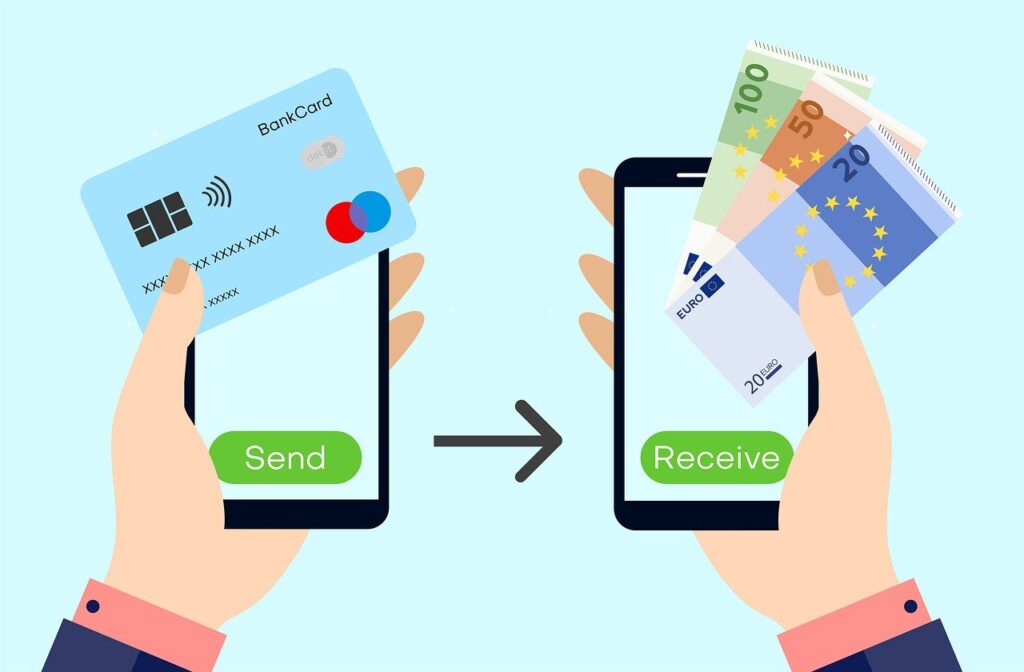Pay Yourself First Budget: The Genius Strategy That Guarantees You’ll Build Wealth

Here’s a question that’ll probably make you uncomfortable: When was the last time you paid yourself before paying everyone else?
I’m talking about your landlord, credit card companies, utility providers, grocery stores, and that subscription service you forgot you had. These folks get paid religiously every month, but what about you? When do YOU get paid from your own paycheck?
If you’re like most people, the answer is “never” or “whatever’s left over” (which is usually nothing). That’s exactly why the pay-yourself-first budget exists, and why it’s probably the most powerful wealth-building strategy you’ve never heard of.
I discovered this approach during a particularly frustrating period when I was making decent money but had absolutely nothing to show for it. Every month, I’d pay all my bills, buy groceries, grab coffee here and there, and somehow end up with $47 in my checking account. Sound familiar?
The pay-yourself-first budget flipped my entire financial world upside down. Within six months, I had more money saved than I’d managed to accumulate in the previous three years.
Today, I’m sharing exactly how this “reverse budgeting” strategy works and why it might be the missing piece in your wealth-building puzzle.
What Is a Pay-Yourself-First Budget?

A pay-yourself-first budget is beautifully simple: you save money BEFORE you spend money on anything else. Instead of hoping there’s something left over at the end of the month (spoiler alert: there never is), you treat savings like your most important bill and pay it first.
Think of it as putting on your own oxygen mask before helping others. You secure your financial future first, then handle everything else with whatever remains.
Here’s how it works in practice: If you earn $5,000 monthly, you might immediately transfer $1,000 to various savings goals (emergency fund, retirement, vacation fund), then live on the remaining $4,000. Your savings happen automatically, guaranteed, before life has a chance to interfere.
This approach is also called “reverse budgeting” because it flips traditional budgeting on its head. Most budgets start with expenses and hope for leftover money to save. The pay-yourself-first method starts with savings and forces your lifestyle to fit what remains.
The Psychology Behind Why This Works
Traditional budgeting relies on willpower and discipline – two resources that get depleted throughout the day. By the time you’ve made dozens of decisions, resisted multiple spending temptations, and dealt with life’s daily stresses, your willpower tank is empty. That’s exactly when you need to make the saving decision in traditional budgeting.
Pay-yourself-first budgeting eliminates this willpower requirement entirely. The saving decision happens once, upfront, when your mental energy is fresh. Everything else becomes automatic.
How Does a Pay-Yourself-First Budget Work?

The mechanics are straightforward, but the results are powerful:
Step-by-Step Process
Day 1 (Payday): Your paycheck arrives Day 1 (30 minutes later): Automatic transfers move your predetermined savings amounts to designated accounts Days 2-30: You live on whatever remains, knowing your financial future is already secured
Real-world example:
- Monthly income: $6,000
- Automatic savings: $1,200 (20%)
- Available for expenses: $4,800
- Result: $14,400 saved annually without thinking about it
The Power of Automation
Manual savings requires 12+ decision points per year (every month you have to decide to save). Each decision point is an opportunity for excuses, delays, or “just this once” exceptions.
Automatic savings requires ONE decision point (the initial setup). After that, your wealth building runs on autopilot while you focus on living your life.
Why Should You Pay Yourself First When Budgeting?

Because every other method sets you up to fail, while this one sets you up to succeed. Let me explain why:
Traditional Budgeting vs. Pay-Yourself-First
Traditional approach: Pay bills → Buy necessities → Handle unexpected expenses → Save whatever’s left (usually $0)
Pay-yourself-first approach: Save first → Adjust lifestyle to fit remaining money → Build wealth consistently
The Behavioral Advantage
When you know you only have $4,000 to spend (because $1,000 is already saved), you naturally become more thoughtful about purchases. It’s like having a smaller wallet – you can’t spend money that isn’t there.
Personal story: After implementing this system, I stopped my daily $6 coffee habit not because I budgeted against it, but because I simply didn’t have the extra money readily available. My coffee money was already working in my investment account.
Stress Reduction
Knowing your financial future is secure before you spend a single dollar on anything else creates incredible peace of mind. Unexpected expenses become inconveniences rather than financial disasters.
What Is the Ideal Percentage to Pay Yourself?

This is where most people get paralyzed by analysis. They spend weeks researching the “perfect” percentage instead of starting with something reasonable.
The 20% Sweet Spot
For most people, 20% represents the goldilocks zone – not too aggressive to be unsustainable, not too conservative to be ineffective.
How to allocate your 20%:
- 10% for retirement/long-term investing
- 5% for emergency fund (until you reach 6 months of expenses)
- 5% for specific goals (house down payment, vacation, etc.)
Income-Based Adjustments
- Lower income ($30,000-50,000): Start with 10-15% and increase gradually
- Medium income ($50,000-100,000): 15-25% is realistic for most people
- Higher income ($100,000+): 25-50% becomes possible as fixed expenses represent smaller percentages
Life Situation Modifications
- Heavy debt load: Temporarily reduce to 5-10% while attacking debt aggressively
- Major expenses coming: Adjust percentages but maintain the habit
- Irregular income: Use your lowest monthly income as the baseline
The key principle: Start with what feels challenging but manageable. You can always adjust later, but you can’t get back the months you spent not saving while searching for the “perfect” percentage.
Pay-Yourself-First Budget Pros and Cons
Like any financial strategy, this approach has advantages and limitations. Let me break down both sides:
Pros
It’s Low-Maintenance Budgeting
Traditional budgets require constant monitoring and adjustment. You track expenses, categorize purchases, and stress about overspending in various categories.
Pay-yourself-first budgets require minimal ongoing effort. Once automation is set up, the system runs itself. You check in occasionally to make sure everything’s working, but daily management is unnecessary.
Automates Your Wealth Building
Automation eliminates the monthly “should I save this month?” conversation with yourself. Your wealth building happens consistently regardless of motivation levels, busy schedules, or competing priorities.
The compound effect: $500 automated monthly savings becomes $308,000 after 30 years (assuming 7% returns). The same amount saved sporadically might total $50,000-100,000 due to missed months and delayed starts.
Prioritizes What Matters Most
In traditional budgeting, savings compete with every other expense for attention. Rent is due, groceries are needed, and that new gadget looks appealing. Savings often loses this competition.
Pay-yourself-first makes savings the priority, period. Everything else adjusts around this non-negotiable commitment to your future self.
Forces Lifestyle Optimization
When you have less available for expenses, you naturally become more efficient with spending. This often leads to discovering you can live quite comfortably on less money than you thought.
Client example: Sarah automated $800 monthly savings and discovered she could reduce her food costs by $200 monthly through meal planning and cooking at home. The forced constraint improved both her finances and her health.
Cons
Not Ideal for Paycheck-to-Paycheck Living
If your current expenses consume 95%+ of your income, this approach requires preliminary work. You need to either increase income or reduce expenses before pay-yourself-first becomes viable.
Solution: Start with even $25-50 monthly to build the habit, while working on increasing the gap between income and expenses.
Could Promote Undisciplined Spending
The “spend whatever’s left freely” aspect can backfire for people with poor spending impulse control. Some people interpret this as permission for reckless spending.
Reality check: You still need basic money management skills. The budget covers savings automatically, but irresponsible spending can still create problems.
May Not Work for Irregular Expenses
Annual insurance premiums, holiday gifts, and home maintenance can throw off the system if not properly planned for.
Solution: Include “irregular expenses” as one of your savings categories, building up funds throughout the year for predictable irregular costs.
Requires Discipline in Setup
While ongoing maintenance is minimal, initial setup requires thoughtful planning and commitment to automation. Some people struggle with this upfront investment of time and energy.
How to Build a Pay-Yourself-First Budget

Ready to implement this wealth-building system? Follow this 5-step process:
1. Create a Budget (Yes, You Still Need One)
Even though this is called “reverse budgeting,” you still need to understand your expenses to determine appropriate savings percentages.
Track expenses for 2-3 months:
- Fixed expenses (rent, insurance, loan payments)
- Variable necessities (groceries, gas, utilities)
- Discretionary spending (entertainment, dining out, hobbies)
Calculate your baseline: What’s the minimum you need to live comfortably? This determines how much is available for pay-yourself-first transfers.
Use tools like Mint or YNAB to simplify tracking
2. Identify Your Savings Goals
This is where the magic happens – deciding what your future self deserves from your current income.
Essential goals for most people:
Emergency fund: 3-6 months of expenses in a high-yield savings account like Ally or Marcus
Retirement: Minimum 10-15% of income, starting with any employer match opportunity
Debt elimination: Extra payments beyond minimums for high-interest debt
Optional goals based on your priorities:
- House down payment fund
- Vacation savings
- Car replacement fund
- Business startup capital
- Children’s education fund
Goal prioritization framework:
- Emergency fund starter ($1,000-2,500)
- Employer 401(k) match
- High-interest debt elimination
- Full emergency fund
- Additional retirement savings
- Specific goals (house, vacation, etc.)
3. Automate Your Savings
This step transforms good intentions into guaranteed results.
Set up automatic transfers for payday:
- Savings accounts for emergency funds and goals
- Investment accounts for retirement and long-term wealth building
- Extra debt payments for acceleration
Recommended automation schedule:
- Day 1 (payday): All savings transfers occur
- Day 15: Mid-month check-in and any adjustments
- Last day of month: Review and plan next month
Choose the right accounts:
- Emergency fund: High-yield savings account for easy access
- Short-term goals (1-3 years): High-yield savings or CDs
- Medium-term goals (3-10 years): Conservative investment accounts
- Long-term goals (10+ years): Growth-focused investment accounts through Vanguard, Fidelity, or Schwab
4. Spend the Rest of Your Money Wisely
Here’s where pay-yourself-first differs from “spend freely without thinking.”
Smart spending principles:
Cover necessities first: Housing, utilities, groceries, transportation, minimum debt payments
Then handle wants: Entertainment, dining out, hobbies, discretionary purchases
Maintain some structure: Even without detailed tracking, having rough guidelines prevents overspending
Example monthly allocation after $1,000 savings:
- Rent: $1,500
- Groceries: $400
- Transportation: $300
- Utilities: $200
- Insurance: $150
- Minimum debt payments: $200
- Everything else: $1,250
Build in flexibility: Some months you’ll spend more on groceries, others more on entertainment. The key is staying within your overall remaining budget.
5. Make Adjustments as Needed
Life changes, and your budget should adapt accordingly.
Monthly reviews:
- Are you comfortable with remaining money after savings?
- Do any savings goals need adjustment?
- Are there new priorities to consider?
Quarterly deeper reviews:
- Calculate progress toward each goal
- Adjust percentages if income has changed
- Evaluate whether goals themselves need updating
Annual comprehensive reviews:
- Assess overall financial health
- Set new goals for the coming year
- Increase savings percentages if possible
When to adjust savings downward (temporarily):
- Major life changes (new baby, job loss, health issues)
- Seasonal income fluctuations
- Unexpected major expenses
When to increase savings:
- Income increases (raises, new job, side hustle success)
- Major debts paid off
- Lifestyle costs decrease (paid off mortgage, kids become independent)
Advanced Pay-Yourself-First Strategies
Once you’ve mastered the basics, these advanced techniques can supercharge your wealth building:
The Percentage Escalation Plan
Start conservative and increase systematically:
- Months 1-6: 10% savings rate
- Months 7-12: 15% savings rate
- Year 2+: 20% savings rate
- Long-term goal: 25-30% savings rate
This gradual increase prevents lifestyle shock while building substantial wealth over time.
The Windfall Strategy
Automatically save large percentages of unexpected income:
- Tax refunds: 80% to savings, 20% for fun
- Bonuses: 70% to savings, 30% for lifestyle
- Gift money: 50% to savings, 50% for enjoyment
The Multiple Account System
Create separate automated transfers for different time horizons:
- Immediate access: High-yield savings (0-1 year goals)
- Short-term: CDs or money market (1-3 year goals)
- Medium-term: Conservative investments (3-10 year goals)
- Long-term: Growth investments (10+ year goals)
The Income Replacement Calculation
Calculate exactly how much you need to save to maintain your lifestyle without working:
Basic formula: Annual expenses ÷ 0.04 = Required investment balance
Example: $50,000 annual expenses ÷ 0.04 = $1,250,000 needed for financial independence
Working backward: $1,250,000 ÷ years to retirement ÷ 12 months = Required monthly savings
Common Mistakes to Avoid
Learn from others’ errors to maximize your success:
Starting Too Aggressively
The mistake: Trying to save 40% of income immediately. The result: Feeling deprived and abandoning the system. The fix: Start with a sustainable percentage and increase gradually.
Ignoring High-Interest Debt
The mistake: Saving money while carrying 18% credit card debt. The result: Losing money on the spread between debt interest and savings returns. The fix: Prioritize debt elimination for anything above 7-8% interest rates
Not Building Emergency Funds First
The mistake: Putting all savings into investments or long-term goals. The result: Having to liquidate investments or go into debt for emergencies. The fix: Build emergency funds before focusing on other goals
Forgetting About Taxes
The mistake: Not considering tax implications of different account types. The result: Paying unnecessary taxes or missing tax advantages. The fix: Understand 401(k), Roth IRA, and HSA tax benefits
Never Adjusting the System
The mistake: Setting up automation and never reviewing it. The result: Missing opportunities to optimize or address changing needs. The fix: Regular reviews and adjustments as life evolves
Is Pay-Yourself-First Right for You?
This approach works exceptionally well for certain personality types and situations:
Perfect Candidates
Busy professionals: People who want wealth building without constant money management Inconsistent savers: Those who have good intentions but poor follow-through Goal-oriented individuals: People motivated by achieving specific financial targets Automation lovers: Those who prefer systems over willpower
Consider Other Approaches If
You’re living paycheck-to-paycheck: Focus on increasing income or reducing expenses first You have severe spending impulses: May need more structured expense tracking initially
You prefer detailed control: Some people enjoy the granular control of traditional budgeting Your income is extremely irregular: May need modified approach for freelancers/contractors
Final Thoughts
The pay-yourself-first budget isn’t just a money management technique – it’s a mindset shift that prioritizes your future self over your current desires.
Most people spend their entire working lives making everyone else rich: landlords, retailers, credit card companies, subscription services. The pay-yourself-first approach ensures YOU get rich too.
Remember, every month you delay starting is a month of compound interest you’ll never recover. The best time to plant a tree was 20 years ago. The second-best time is today.
Your future self is counting on the decisions you make right now. Don’t let them down! FYI, building wealth isn’t about earning more money – it’s about keeping more of what you earn. 🙂








